From Robots to Autonomous cars, Artificial Intelligence ‘AI’ has been an integral part of our lives. Today, AI has become an essential part of everything big and small, ranging from the self-working manufacturing units to the smallest screens like smartwatches that we use; it is everywhere. Today, companies, independent of their shape or size, rely on Artificial Intelligence to improve their customers’ satisfaction and increase sales. Perhaps, it won’t be wrong to admit that AI is the next big thing, making its way into the functioning of the fortune 500 companies to allow them to automate their business processes.
Ever wondered what could be the different components of artificial intelligence? Or how ai works? Or have you ever been fascinated by a robot toy and wanted to understand what makes it work?
Well, it’s Artificial Intelligence that comes to play. The subject is vast and comprises a varied number of components that make it work effectively.
Today, in this article, let’s look around how AI works, components of AI, and different FAQs involved with the topic.
Artificial Intelligence is a topic that needs no introduction. From introducing us to robots to allowing humans to be in the era of self-driving rockets and cars, Artificial Intelligence has come a long way from just being a way to solve common mathematical problems to having a market of $164.99 billion in 2023.
Similar to how different parts move a machine, different aspects help the AI function smoothly. More specifically, referred to as basic components of artificial intelligence, these are the different aspects that make up the term ‘Artificial Intelligence.’ All the terms coming together make the operations possible.
Wondering what are the different components of AI and what is learning in ai? Well, let’s find out what AI is in the article!
Analytixlabs is one of the leading providers of solutions and notes around Artificial Intelligence and its components. Our pool of dedicated professionals and experts around the different basic components of artificial intelligence nurtures the students for a great future in AI. Best known for its comprehensive training courses and modules, the faculty believes in training its students to be industry-ready.
What are the Components of AI?
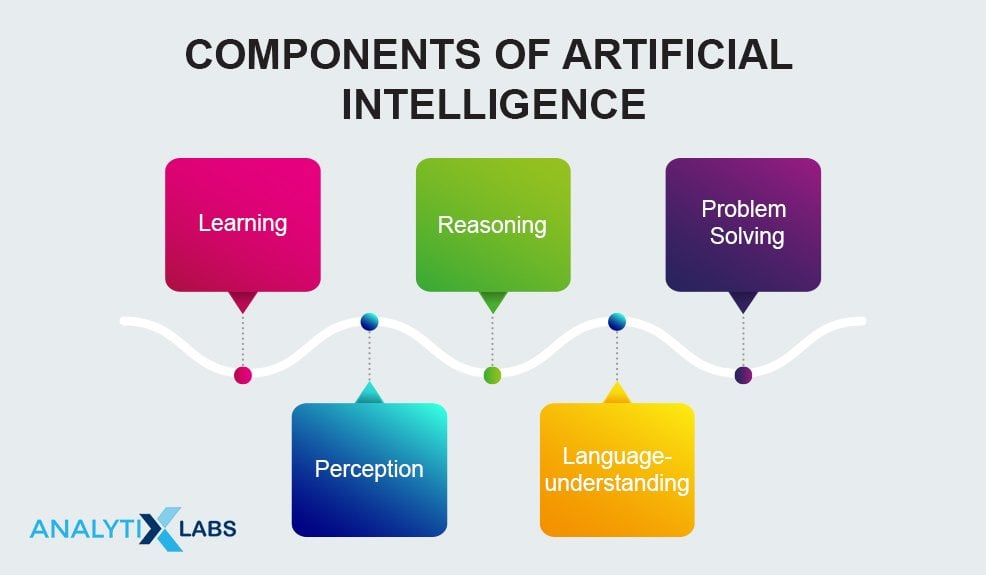
a. Learning
Similar to humans, computer programs also learn in different manners. Talking of AI, learning by this platform is further segregated into a varied number of forms. One of the essential components of ai, learning for AI includes the trial-and-error method. The solution keeps on solving problems until it comes across the right results. This way, the program keeps a note of all the moves that gave positive results and stores it in its database to use the next time the computer is given the same problem.
The learning component of AI includes memorizing individual items like different solutions to problems, vocabulary, foreign languages, etc., also known as rote learning. This learning method is later implemented using the generalization method.
b. Reasoning
The art of reasoning was something that was only limited to humans until five decades ago. The ability to differentiate makes Reasoning one of the essential components of artificial intelligence. To reason is to allow the platform to draw inferences that fit with the provided situation. Further, these inferences are also categorized as either inductive or deductive. The difference is that in an inferential case, the solution of a problem provides guarantees of conclusion. In contrast, in the inductive case, the accident is always a result of instrument failure.
The use of deductive interferences by programming computers has provided them with considerable success. However, reasoning always involves drawing relevant inferences from the situation at hand.
c. Problem-solving
In its general form, the AI’s problem-solving ability comprises data, where the solution needs to find x. AI witnesses a considerable variety of problems being addressed in the platform. The different methods of ‘Problem-solving’ count for essential components of intelligence that divide the queries into special and general purposes.
In the situation of a special-purpose method, the solution to a given problem is tailor-made, often exploiting some of the specific features provided in the case where a suggested problem is embedded. On the other hand, a general-purpose method implies a wide variety of vivid issues. Further, the problem-solving component in AI allows the programs to include step-by-step reduction of difference, given between any goal state and current state.
d. Perception
In using the ‘perception’ component of Artificial Intelligence, the element scans any given environment by using different sense-organs, either artificial or real. Further, the processes are maintained internally and allow the perceiver to analyze other scenes in suggested objects and understand their relationship and features. This analysis is often complicated as one, and similar items might pose considerable amounts of different appearances over different occasions, depending on the view of the suggested angle.
At its current state, perception is one of those components of intelligence that can propel self-driving cars at moderate speeds. FREDDY was one of the robots at its earliest stage to use perception to recognize different objects and assemble different artifacts.
e. Language-understanding
In simpler terms, language can be defined as a set of different system signs that justify their means using convention. Occurring as one of the widely used artificial intelligence components, language understanding uses distinctive types of language over different forms of natural meaning, exemplified overstatements.
One of the essential characteristics of languages is humans’ English, allowing us to differentiate between different objects. Similarly, AI is developed in a manner that it can easily understand the most commonly used human language, English. This way, the platform allows the computers to understand the different computer programs executed over them easily.
Different Types of Learning
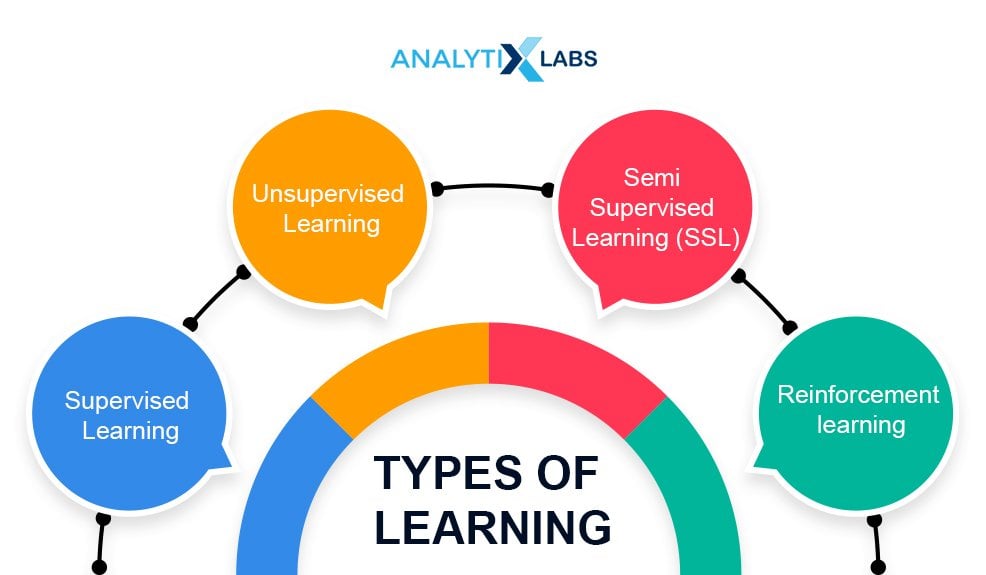
a. Supervised Learning:
One of the most common forms of machine learning, supervised learning, aims to train the different algorithms to describe input data. It allows the algorithms to present the input data in such a manner that it can produce outputs effectively and without making man ny errors.
The learning problems in Supervised learning include problems like classification and regression. The different classified outputs used in these problems account for different categories, putting numerical value for the problems.
You can notice the different applications of supervised learning around recognizing speech, faces, objects, handwriting, or gestures.
b. Unsupervised Learning
Unlike supervised learning, where the platform uses labeled data to train the applications, unsupervised learning uses unlabeled data for its training. More of a trial and error method, the unsupervised learning method is a reliable means to showcase different unknown data features and patterns, allowing categorization. Broadly categorized as association problems and clustering, this form of learning allows AI to ask questions the right way.
By framing the right question to be asked, this platform allows the program to model several data organizations to highlight anomalies. Further, the association over this type of learning could be applied to know more about tendencies based on newly discovered relationships among variables over a vast database.
c. Semi-supervised Learning (SSL)
Semi-supervised learning falls in between unsupervised and supervised learning. This method of learning is used by AI when it requires solving balance around different approaches. In several cases using this learning method, the reference data needed to find a solution is available, but it is somewhere either accurate or incomplete. This is where SSL comes to play as it can easily access reference data and imply the use of unsupervised learning techniques to find the nearest possible solution.
Interestingly, SSL uses both labeled & unlabelled data. This way, AI can easily implement the function of both the data set to be able to find relationships, patterns, and structures. It is also used in reducing human biases in the process.
d. Reinforcement Learning
A form of the dynamic learning process, Reinforcement learning allows the systems to train algorithms with the use of punishment and reward systems. The reinforcement learning algorithm finds solutions by interacting with the individual components of the environment. The language uses rewards by executing operations correctly and penalties in a situation where it cannot execute operations nicely.
This way, the algorithm learns without being taught by any human and uses the least menial intervention in learning. Usually consisting of three components: agent, environment, and actions. This learning process focuses on maximizing the reward and diminishing the penalty to learn well.
You may also like to read: What is Knowledge representation in Artificial Intelligence?
Common AI Applications

Listed below are some of the most common applications of AI in the modern world:
1. Chatbots:
In a time where customers want real-time resolution of their issues, AI has been the key to catering to their demand. Today, chatbots are delivering flexible and smart analytics via engaging visitors over conversations. Interestingly, over 67% of online visitors prefer chatbots.
2. Artificial Intelligence in eCommerce:
AI caters to different forms of the e-Commerce model by availing its services to every size of the business. Leveraging the use of machine learning, the AI software automates the process of adding tags to products, organizing, and improving the ability of visual searches. With expectations to reach $49 billion by 2021 in its market value, the best is yet to come!
3. Human Resource Management:
AI and machine learning have drastically changed the scope of hiring in companies of different sizes. It provides businesses with the opportunity to retain the best talent, securing a reliable future for operations.
4. Healthcare department:
Expected to reach $6.6 billion in market valuation by 2021, the healthcare department has also been primarily benefitted from AI. In its present form, AI can manage an entire clinic cost-effectively.
5. Logistics & Supply Chain:
Using the mix of customer data and analytics, AI has helped the logistics & supply chain reach its peak. It allows businesses to act according to the consumer data and take all important decisions regarding the supply chain operations.
Related: 15 Real World Applications of Artificial Intelligence
Concluding Thoughts
Now that we have understood the different components of intelligence, how does ai work, and the different types of learning that it uses, we can confidently say that AI is the future! One of the most reliable means of intelligent automation, having your basics right around AI, is one of the best things to invest your time in.
Artificial Intelligence helps businesses improve their services and get closer to their audience. Further, even if we don’t talk of the business aspect, AI is the key to automation with self-driving cars to systems that can run our homes over voice commands.
Lastly, the subject might be new and confusing, and it certainly is one of the best things to learn to secure your future. At AnalytixLabs, we provide premium artificial intelligence learning materials with guidance from industry experts.
FAQs – Frequently Asked Questions
- What are the 4 types of AI?
The 4 types of AI are:
- Reactive Machines.
- Self Aware.
- Theory of Mind.
- Limited Memory.
- What are the three artificial intelligence components used in everyday applications?
The three artificial intelligence components used in typical applications are:
- Speech Recognition
- Computer Vision
- Natural Language Processing
- What are artificial intelligence techniques?
The term AI Technique refers to how the program organizes and uses the collected knowledge effectively. This way, it can solve problems effectively and in real-time.
You may also like to read:
1. How to Become an AI Engineer? Know about Skills, Role & Salary
2. A Practical Approach to Artificial Intelligence Course Syllabus

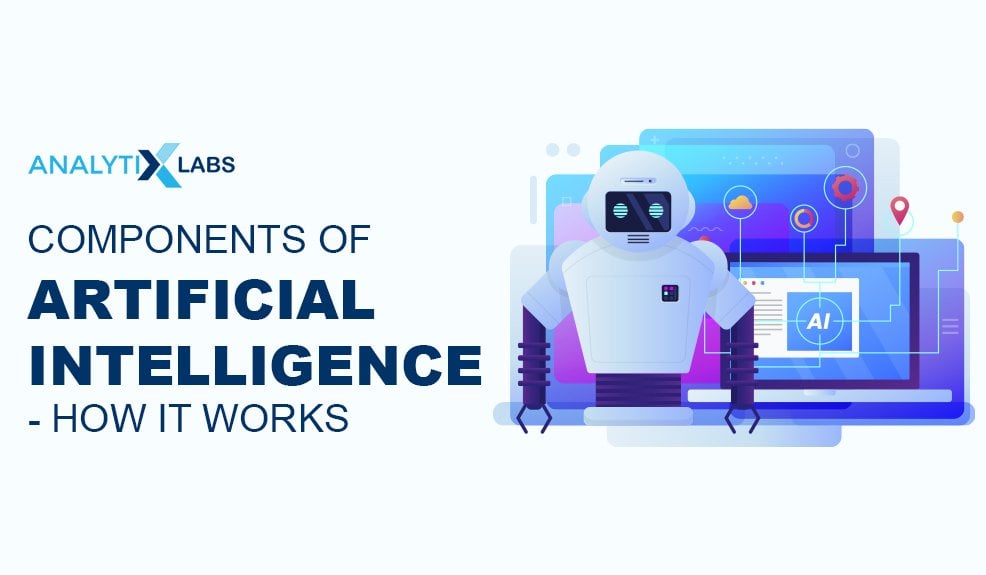
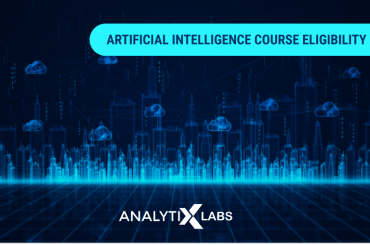
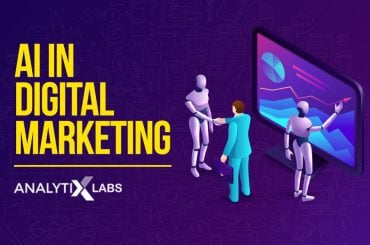
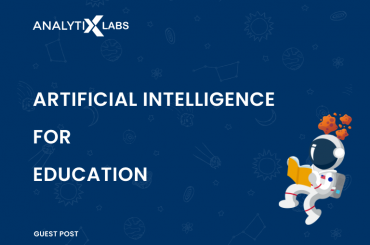
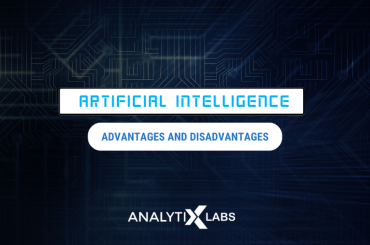



1 Comment
Useful Information. Thanks for sharing